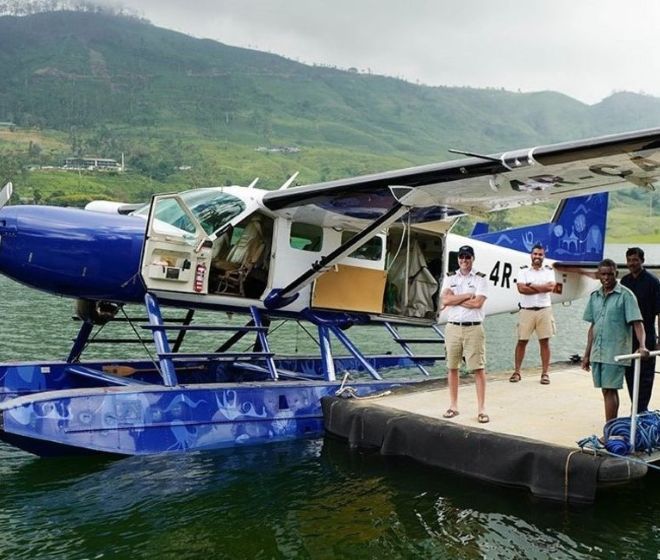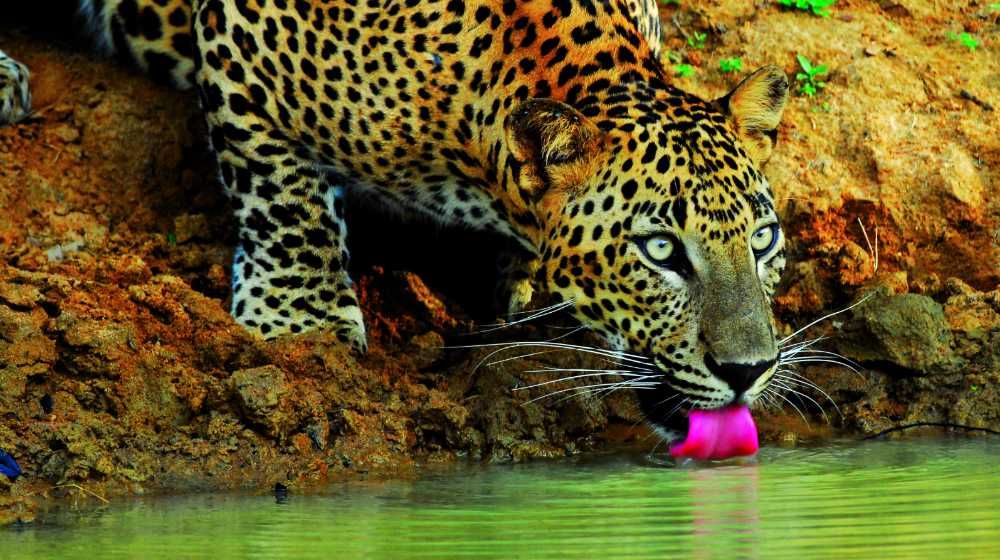
Wilpattu National Park Sri Lanka
What is Wilpattu ?
Wilpattu is Sri Lanka’s oldest and largest national park which island’s premier wildlife viewing destination situated in the northwest coast of Sri Lanka close to The Sacred City of Anuradhapura (UNESCO World Heritage), about 180km north of Colombo with native wildlife within their habitats. Wilpattu National Park covers an area of hectares 131,800 (1,317 square kilometers) and is managed by Department of Wildlife Conservation DWC Sri Lanka. Wilpattu National Park was declared as a sanctuary in 1905 and upgraded to a National Park on February 25, 1938. (Perera, 2018). Wilpattua National Park is one of the most recommended tourist destinations in Sri Lanka especially for family adventure holidays & wildlife photography tours in Sri Lanka.
When consider about the landscape of the park it is flat and covered with dry evergreen forest and deciduous thorn scrub, interrupted by open plains and some 40 seasonal or permanent lakes known as Villu rimmed by sand dunes or sandy plains. Villu are flat, shallow depressions containing rain water, usually with no water inlet or outlet. They give Wilpattu its name: the “Land of lakes”. The exceptional geographical features groom your wildlife tour a memorable experience. Further Wilpattu National Park is an ideal place for wildlife educational field trips & research in Sri Lanka.
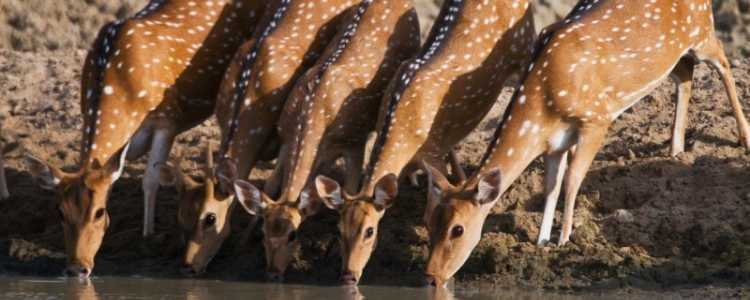
Code of Conduct for visitors at Wilpattu National Park
- Do not feed animals or take any material from the park (including plant parts, bones, rocks etc.)
- Observe strict silence at wildlife sightings during your wildlife safari.
- Do not leave your vehicle, lean out of the window or climb on the roof.
- Only leave your vehicle in designated locations- such as Kumbuk Vila and Kudiramale.
- Leave your footprints only. Do not throw rubbish out of your vehicle, please take all the garbage back with you.
- Smoking inside the park is strictly prohibited.
- Only 4 x 4 vehicles are allowed inside the park and they have to maintain a maximum speed limit of 25km/h.
- Slow driving enables you to observe small animals such as birds, reptiles and mammals.
- Please ensure that your driver does not obstruct other vehicles or interfere with animal movement.
Visitors Guide / Frequently Asked Questions FAQ
Is it worth to visit Wilattu National Park during my holiday in Sri Lanka ?
It depends on your purpose of travel and period of stay. Since Wilpattu National Park is one of the best safari parks in Sri Lanka, we recommend you to do a jeep safari in Wilpattu National Park. Wilpattu National Park is one of 2 National Parks in Sri Lanka where you can witness Sri Lankan Leopard (Panthera Paradus Kotiya). If you access Yala National Park during your holiday, you may skip Wilpattu.
But, If you are on your wildlife photography tour or wildlife educational field trip to Sri Lanka, Wilpattu National park is a MUST.
How much is the Wilpattu National Park Entrance fees?
As per the latest revision of National Park entry fee (Amendment 2022 sep 1) following will be the Wilpattu National Park latest entrance fee
- 1 Person 14,920.00 Rupees
- 2 Persons 25,080.00 Rupees
- 3 Persons 35,250.00 Rupees
- 4 Persons 45,400.00 Rupees
- 5 Persons 55,550.00 Rupees
- 6 Persons 65,720.00 Rupees
- 7 Persons 80,450.00 Rupees
- 8 Persons 90,610.00 Rupees
- 9 Persons 100,770.00 Rupees
- 10 Persons 110,930.00 Rupees
Special Note - These prices are as per the 2022 September 3 updated exchange rate (1 USD = 360 Rupees) and prices can be changed at any time without prior notice.
What type of animals I can see during my wildlife safari at Wilpattu National Park
You will be able to witness Leopards, Elephants, Bears, Deer, Crocodiles, Reptiles and many verities of birds
Can I visit entire National Park within a day?
Yes possible, but if you are on your wildlife photography tour in Sri Lanka, we strongly recommend you to spend 2 nights in Wilpattu National park area.
Can I definitely see a leopard during my wildlife jeep safari in Wilpattu National park?
No. Wilpattu National park is rich with leopard / elephant / sloth bear and other animals. But we cannot guarantee that you will witness a leopard during your wildlife tour in Wilpattu. But being one of the best travel agents in Sri Lanka, Ceylon Expeditions do our level best to show a leopard during your safari.
Can I visit Wilpattu National Park while am staying in Anuradhapura?
Yes this is possible to do a half day safari while you are in Anuradhapura sacred city.
What is the best time to see Wilpattu National Park?
Wilpattu is 365 days safari park in Sri Lanka but recommend to visit between February to October
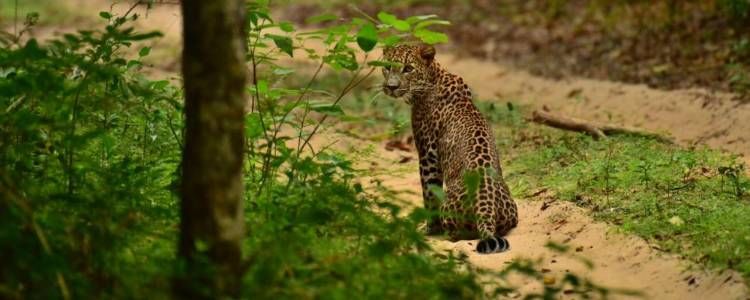
Can I buy Wilpattu Entrance Ticket online?
Yes, this facility is now available and for more details Wilpattu National Park entrance ticket online booking
Can I pay in USD for Wilpattu Entrance Fees?
No, you must pay in Sri Lanka Rupees and any international currencies are not accepted for National Parks of Sri Lanka for entrance fees.
What is the cost of the safari Jeep in Wilpattu National Park?
Approximately cost of half day safari Jeep at Wilpattu National Park is 40 - 45 $
Fully day safari jeep cost at Wilpattu National Park 85 - 90 $
All are private jeeps by different owners but all are duly registered under DWC Department of Wildlife Conservations.
Note - This price is based on 2022 January rates and the new prices may vary
Can I hire Toyota land cruiser / Mitsubishi Jeep for Safari at Wilpattu National Park?
Yes. Most of the Wilpattu Safari jeeps are Indian made but there are Japanese made Toyota / Mitsubishi jeeps as well. Price will be slight higher than the Indian made jeeps.
Keep Ceylon Expeditions or your travel agency in Sri Lanka informed in advance that you need a Toyota jeep for Wilpattu National Park safari.
How many people can travel in 1 safari jeep at Wilpattu National Park?
6 people can accommodate in 1 jeep but it’s comfortable for 3 – 4 people in 1 jeep
If you in wildlife photography tour in Sri Lanka, please reserve 1 jeep for 3 people where you can comfortably handle your equipment etc.
Do I get a tracker for my safari? Is Wilpattu National Park providing tracker for safari?
Yes, Department of Wildlife provide wildlife tracker for each jeep free of charge subject to availability. But your Ceylon Expeditions guide also will join for the jeep safari together with jeep driver.
Can I book a shared jeep for Wilpattu safari through Ceylon Expeditions?
Not really. If you are coming with a big tourist group through a travel agency in Sri Lanka, you will be on shared jeep but for all other regular safaris, you need get a private jeep.
Do I need to pay for the tip for safari jeep driver & tracker?
Tipping is a common practice in Sri Lanka. If you satisfied with the service you received from them, recommend to pay a reasonable tip for tracker & jeep driver.
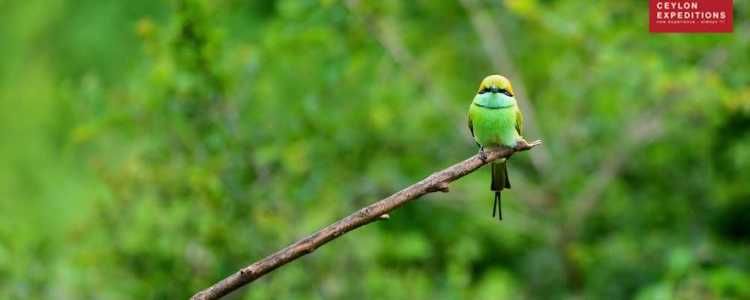
Which are the best safari parks in Sri Lanka?
We recommend Wilpattu National Park / Minneriya National Park / Yala National Parks safaris and Uda Walawe National Parks are the best safaris in Sri Lanka. But note there are 22+ National Parks in Sri Lanka and better you consult your travel agent in Sri Lanka before select the best National Park you should visit.
What to bring for jeep safari at Wilpattu National Park Sri Lanka?
-
Light costumes / recommended colors are Green, Beige, khaki, tan etc.
-
Sunblock / Sunglasses / Lip balm / hat
-
Insect repellent
-
Binoculars are recommended to improve sightings
-
Camera and accessories such as spare batteries, memory cards
-
Cool bottled water / soft drinks / snacks will be provided by Ceylon Expeditions Travels
How can I get lunch during full day safari in Wilpattu National Park?
Generally, travelers bring packed breakfast & lunch, but Ceylon Expeditions deliver fresh hot meal (Lunch) to inside the park on request.
What is the best time to see wildlife?
Early morning and the hours and evening hours are ideal times to view wildlife.
Is it safe to go on safari at Wilpattu National Park?
Cannot give a Yes or No answer since you entering to the zone of the untamed wild animals. Department of Wildlife Conservation (DWC) has fully committed for the safety of the visitors. Code of conduct / rules for the safari jeep drivers are well in place. But make sure your own safety and always be inside the safari jeep and avoid unnecessary behaviors like feeding / shouting / selfie / high speed driving etc.
How do I plan a safari at Wilpattu National Park?
If you are traveling your own, make sure to reserve a safari jeep well in advance to avoid last minute hassle at the entrance gate searching for jeeps which destroy you holiday. You can buy your entrance ticket at the gate. Keep water / camera / light dress / binocular ready. If you travel through a travel agency in Sri Lanka, they will organize all these well in advance.
How do I make a jeep safari booking at Wilpattu National Park?
eMail to holidays@expeditions.lk or SMS / WhatsApp / Viber to our hotline +94 717 88 44 99
Can I pay Wilpattu entrance ticket from my credit or debit card?
As of January 2022, this facility id not available.
Can I hire a air condition safari jeep at Wilpattu National Park?
Yes, possible but subject to availability. Make sure to inform your travel agent in advance.
Are there lots of bugs inside the Wilpattu National Park?
Since you are in tropical country, yes, bugs / mosquitoes are there but this wont affect your jeep safari
Can I feed the animals at Wilpattu National Park?
Not at all. You are not allowed to feed animals at any National Park in Sri Lanka. This is an offence.
Can pregnant women go on safari at Wilpattu National Park?
Yes can but subject to medical advices. Ceylon Expeditions operate babymoon holidays in Sri Lanka including safaris with very comfortable spacious safari jeeps with very careful slow driving and with very special care. In this case you need to inform your travel agency in Sri Lanka.
What kind of clothing should I pack for Wilpattu National Park safari?
Casual, comfortable cotton clothing is suitable due to temperature and ideal colurs are Khaki, brown, white, green and beige. Please note: brighter colours like blue or red are proven to attract insects.
What happens if it rain during my Wilpattu jeep safari,
All jeeps are open, but tent is there to cover you if it rain.
How long Wilpattu National Park Jeep Safari?
Regular safari will take 3 – 4 hours but if you are on your wildlife holiday or bird watching tour in Sri Lanka, we recommend full day + half day safari since Wilpattu is the largest National Park in Sri Lanka with high animal sightings.
Can I stay in a luxury tented camp near Wilpattu National Park?
Yes, there are few luxury tented camping operators in Wilpattu and contact your travel agency in Sri Lanka or Ceylon Expeditions to go with a safest / luxury tented camp.
Is Wilpattu jeep safari escorted?
Yes these are escorted safari
Can I use washroom / toilet at the entrance of Wilpattu National Park?
Yes, toilets are available at the entrance premises.
Is there mobile phone reception in Wilpattu National Park?
No mobile signals are available inside the Wilpattu National Park. Signals are jammed purposely by the government to enhance the experience of the wildlife enthusiasts.
What are the other National Parks to see Leopards in Sri Lanka?
There are only 2 National Parks to see Sri Lankan leopards namely Wilpattu & Yala National Parks which mostly recommend visiting during your wildlife photography tour or family holiday in Sri Lanka.
How can I get water / soft drinks during the safari at Wilpattu National Park?
Ceylon Expeditions exclusive jeeps are fully loaded with cool box water / snacks / soft drinks etc. but if you are an individual traveler, better you check with your travel agent in Sri Lanka beforehand.
Am I allowed to walk around inside the Wilpattu national parks during jeep safari?
Not at all. You are not allowed to get down the Jeep and must be inside the vehicle unless otherwise instructed by the wildlife tracker. You can get down at few selected locations inside the national Park in consultation with your tracker / tour leader.
What if I have special dietary requirements?
Ceylon Expeditions generally check meal plan well in advance and arrange accordingly. If you are an individual traveler, better you check with your Travel Company in Sri Lanka.
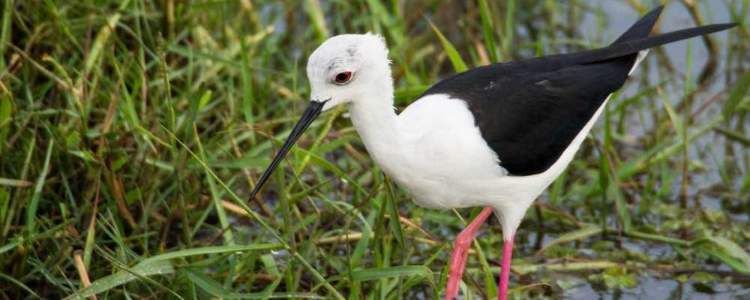
What travel documents do I need to visit Wilpattu National Park Sri Lanka?
Only you will need a valid passport or National Identity Card to enter the national Parks in Sri Lanka.
Do I need to book Wilpattu National Park Safari in advance before I arrive Sri Lanka?
If you are an individual traveler, you do not need advance booking and you may find a safari jeep and pay the entrance ticket at the entrance gate on the dat you travel. (In this case you need reach entrance may be 1 Hr early to find a safari jeep and obtain entry permit.
But if you book a tailor made holiday with a travel agency in Sri Lanka, they will organize safari jeeps / entrance & other logistic matters well in advance. Travel agents in Sri Lanka are maintaining their own selected pool of safari jeeps at each National Park.
What are the opening hours of Wilpattu National Park?
Wilpattu National Park is a 365 days park and open from 6.00 AM to 6.00 PM.
What is the Wilpattu National Park Contact Number (Contact number of Wilpattu ticket counter / entrance gate ?
Dialing from Sri Lanka local number 0253855891
Dialing from an overseas telephone +94253855691
Anuradhapura Wildlife Office contact number 025 2235058 (During office hours only)
How to get to there at Wilpattu National Park?
Located about 190 KM north to Colombo city. You may travel through Colombo ⇒ Chilaw ⇒ Puttalam ⇒ Karuwala Gaswewa ⇒ Wilpattu Hunuwilagama Entrance
Is the Wilpattu National Park pet friendly?
No, Sri Lanka National Parks are not pet friendly.
Can I do night safari in Wilpattu National Park? Infrared drive to inside the Wilpattu National Park?
No it’s banned to do night safaris / Infrared drives in Wilpattu National Park Sri Lanka.
How many National Parks in Sri Lanka?
There are 22 National parks in Sri Lanka.
What are the famous National parks in Sri Lanka? / Most visited National Parks in Sri Lanka
Yala National Park / Wilpattu National Park / Minneriya National Park / Kaudulla National Park / Hurulu Eco Park / Bundala National park / Horton Plains National park / Wasgamuwa National park / Uda Walawe National Park
Weather conditions of Wilpattu Sri Lanka?
Sri Lanka is a year-round holiday destinations which geographically located close to the equator. Generally, December to mid-April is considered to be the peak season in Sri Lanka Tourism. Even though this tiny island is located near the equator, temperatures are fairly constant throughout the year. Sri Lanka coastal regions average temperature is 25-30°C and the highlands 15-18°C on average. Recommended tome is February to October
Any other details please contact,
Wildlife Tour Consultant of Ceylon Expeditions
Voice / SMS / WhatsApp / Viber +94717 88 44 99 or holidays@expeditions.lk
Can I enter to Wilpattu National Park?
The visitors have the access to enter the park for tourism purposes with necessary approvals / entry permits
Do I need a ticket or entry permit to enter to Wilpattu National Park?
Yes entrance ticket is mandatory to enter to Wilpattu National Park.
What is the maximum vehicle speed limit of Wilpattu National Park?
25 KM /h. Please maintain a limited speed and let wildlife to live. There are many reported wildlife accidents in National Park due to exceeding speed limits.
Is there a wildlife museum at Wilpattu National Park?
Yes, museum is located at Hunuwilagama entrance.
What are the historical aspects of Wilpattu National Park ?
Tanks, Buddhist monasteries, stupas, and rock inscriptions are among the buildings scattered across the park, indicating a civilization focused on irrigated agriculture in the area. Much of the legend and history is associated with the park and its surroundings. It is said that King Vijaya landed in about 500 BC and founded the Sinhalese people in Tammanna Nuwara, is said to be in Wilpattu National Park between Kudiramale point and Moderagam Ara mouth. According to the facts it is remarked that Galbendi Neeravia, North-East of Maradanmaduwa tank, is supposed to be the place where Prince Saliya, the son of King Dutugamunu, lived with his bride Asokamaala 2,000 years ago. Further, prehistoric sites of the Paleolithic and Mesolithic period have also been recorded around the area. (Channa Bambaradeniya, 2006)
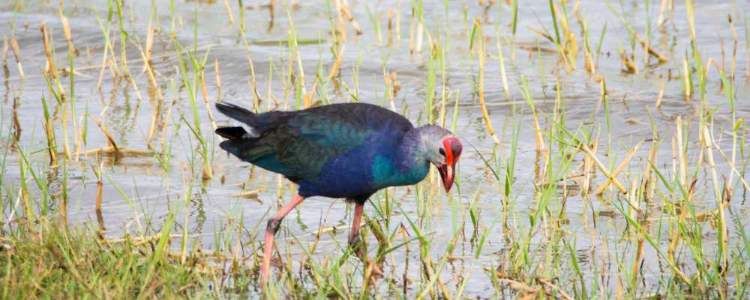
Wilpattu National Park During Civil War in Sri Lanka
The park was reopened on 27th February 2010 which had closed to the public for nearly 20 years during the civil conflict in Sri Lanka. Due to the war the area was suffered a lot. Substantial amount of time, parts of the frontline ran through or near the park. As a consequence, the management was severely disrupted, and the park staff and many animal populations suffered. Now the park infrastructure and management are being rehabilitated and the wildlife is almost recovered.
Livelihood of the people around Wilpattu National Park
In the immediate neighborhood of Wilpattu, there are approximately 34,000 people living in 135 settlements. Coastal fishing, livestock-rearing in the north and south, but largely rain-fed agriculture, are among their main sources of income. Living next to a national park has its drawbacks, such as animals eating the crops, but it also has its advantages, such as job opportunities in the tourism industry. Wilpattu has a Community Outreach program that aims to reduce such problems and to increase the benefits by working closely with the local people. Visiting the Wilpattu National Park leads the way to study about typical livelihood of the people who are living in the buffer zones of Wilpattu National Park and this is recommended for your experiential holidays in Sri Lanka.
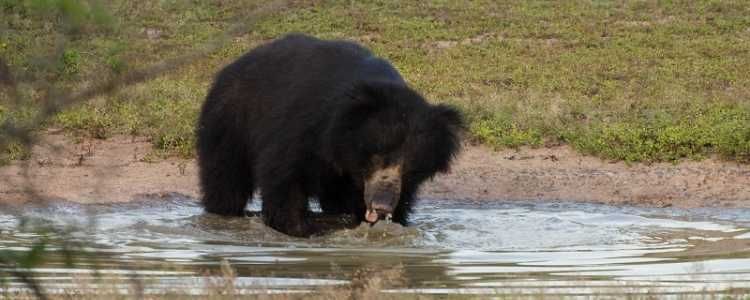
Flora of Wilpattu National Park
Wilpattu is a shelter for many species of flora and some of them are Palu (Manilkara hexandra), Satin (Chloroxylon swietenia), Milla (Vitex altissima), Weera (Drypetes sepiaria), Ebony (Diospyros ebenum) and Wewarna (Alseodaphne semecarpifolia). The flora at the Wilpattu National Park is even more diverse and help support much of its wildlife. A survey report released by the World Conservation Union (IUCN) in 2006 records six hundred and twenty-three flowering plant species belonging to one hundred and twenty-three plant families. Among them, twenty-seven plants were endemic and a further twenty-one plants were recorded as threatened.
Wilpattu's western half is covered with dense forests, meadows, grasslands, and a few significant water bodies that provide the area with water. There are three types of vegetation to be found here. Coast vegetation, including salt marsh and low scrub immediately near to the beach, as well as monsoon forest with towering emergent, are found in close proximity to the shoreline. Around 70% of Wilpattu National Park is covered in deciduous thorn scrub and dry evergreen forest of varying heights depending on soil quality. During the rainy season, little grasslands surrounding the villu are vulnerable to floods.
A total of 621 species of plants have been recorded in Wilpattu, and the large Palu tree (Manilkara hexandra) is conspicuous in the forest. There are also permanent and seasonal rivers as well as irrigation tanks up to 2,000 years old, coastal salt marshes and scrub lie behind the beach. The Kala Oya estuary contains one of the largest mangrove forests in Sri Lanka. The shallow sea is highly productive, supporting artisanal fishermen, and contains beds of sea grass, supplying food for globally endangered Dugong.
Fauna of Wilpattu National Park
Wilpattu National Park and it surroundings support many species of animals:
- 23 species of fresh water fish
- 17 species of amphibians
- 57 species of reptiles
- 253 species of birds
- 45 species of mammals
With above rich collection of fauna species, Wilpattu National Park becoming the most visited national park and the hotspot for wildlife photography tours in Sri Lanka. Further this is recommended place for wildlife educational holidays. The park is well known for accommodating globally threatened large mammals: Leopard (Panthera pardus kotiya), the Sloth Bear (Melursus ursinus) and Elephant (Elephas maximus maximus). The park is a home to scattered herds of Spotted Deer (Axis axis), with the Mugger Crocodile (Crcodylus palustris) being the most notable reptile. Dugongs (Dugong dugon), Indo-Pacific Humpbacked Dolphins (Sousa chinensis), and Maritime Turtles all inhabit in shallow marine environments (Olive Ridley - Lepidochelys olivaceae and Green Turtle - Chelonia mydas).
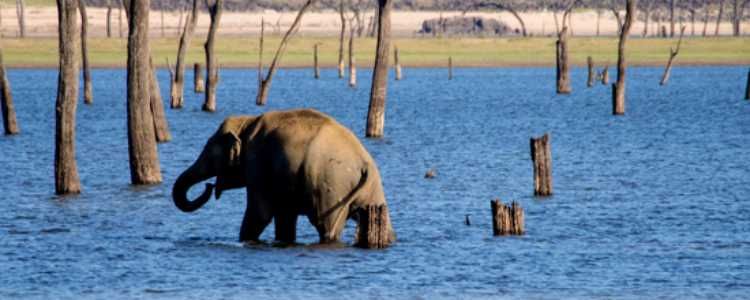
Avifauna of Wilpattu National Park
The following endemic species of birds were recorded in Wilpattu National Park and surroundings by proving that the Wilpattu National Park is a hotspot for the bird watching tours in Sri Lanka. Sri Lanka Junglefowl (Gallus lafayetti), Sri Lanka Green Pigeon (Treron pompadora), Grey Hornbill (Ocyceros gingalensis), Black-capped Bulbul (Pycnonotus melanicterus), Brown-capped Babbler (Pellorneum fuscocappilum), Ceylon Hanging-parrot (Loriculus beryllinus), Ceylon Small Barbet (Megalaima rubricapillus), Crimson-backed Flameback (Chrysocolaptes stricklandi), Ceylon Swallow (Hirundo hyperythra), and Ceylon Woodshrike (Tephrodornis affinis). Being one of the favorite National Parks for bird watching tours in Sri Lanka, Wilpattu is one of the best place to witness dry zone endemic & common bird species.
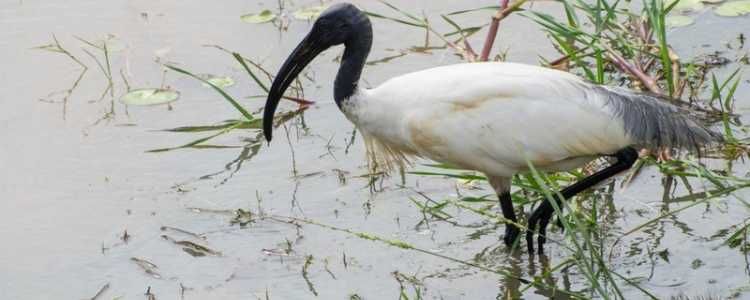
Marine mammals of Wilpattu National Park
Fifteen (15) species of Marine mammals are recorded within the Ramsar boundary and adjoining Kalpitiya bar reef sanctuary area and off the coast of Kandakuliya, Talawila area. Among them, Blue Whale (Balaenoptera musculus) and Bryde's Whale (Balaenoptera edeni) sightings have also been confirmed recently. This makes the destination more highlighted for a multi activity holidays in Sri Lanka. About a 1000+ pod of resident Spinner Dolphin (Stenella longirostris) also dwells in the sea migrating between continental shelf and slope. Rare Rough-toothed Dolphin (Steno bredanensis) was also recoded recently in this area. The area around Kalpitya recorded an unusually large gathering of 200+ Sperm whales (Physter macrocephalus) in recent years.
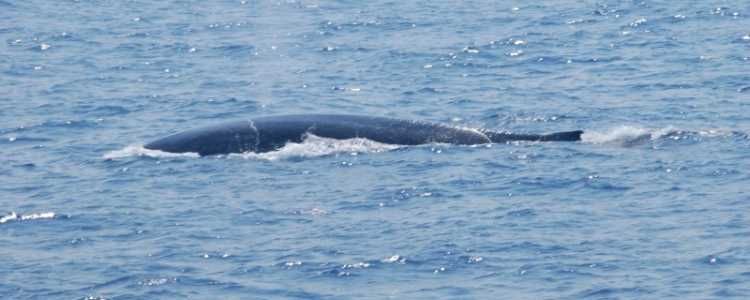
Apart from the marine mammals the largest fish in the world, Whale shark (Rhincodon typus) frequently visits this area for feeding activates. Another rare deep sea living shark species, known as crocodile shark (Pseudocarcharias kamoharai). Considering above rich bio diversity, Wilpattu National park and coastal belt is an ideal location for family adventure / educational holidays and especially for best wildlife holidays in Sri Lanka.
Wilpattu Protected Area Complex (WPAC)
- Wilpattu protected area complex is defined as follow,
- Wilpattu National Park
- Wilpattu North Sanctuary
- Wilpattu Ramsar site which is the proposed marine sanctuary in this strategic management framework
- Proposed zone VI for Wilpattu National Park which will include parts of Wilpattu North Sanctuary, forested land managed by Department of Forest and identified crown lands.
Source – DWC Department of Wildlife Conservation
Climate and Topography of Wilpattu National Park
Wilpattu National Park is situated in the dry zone, and is unlike any other wildlife sanctuary in Sri Lanka. A unique complex of over 50 wetlands called “Villu” is the most prominent topographical feature of the national park and creates a favorable atmosphere for the experience of a leading wildlife safari in Sri Lanka. In the dense scrub forest, 'Villu' are shallow natural lakes filled with rainwater and flanked by broad grassy plains. The presence of these Villus with an abundance of water is best explained by the weather patterns that prevail over the park: while the drought lasts only from May to early September, the main rainy season lasts from September to December, with the north eastern monsoon's heavy downpours; the inter monsoon season visits the park in March and April. The Park's annual temperature is at 27.2 degrees Celsius, and its annual rainfall is around 1000 MM. The climate is typical of the dry and arid zone of Sri Lanka, in which wet (monsoon) and dry seasons alternate.
- The altitude ranges from the sea level to 240 m.
- Annual rainfall is approximately 1,000 mm.
- Wet seasons: September to December, and March to May.
- Dry seasons: January to February, and May to September.
What are the main ecosystems of Wilpattu National Park
As per the classification adopted by Ministry of Forestry and Environment, tropical dry mixed evergreen forests, tropical thorn forests, riverine forests, dry Patana grasslands, flood plains, swamps, streams and rivers, reservoirs, wet villu grasslands, mangroves, salt marshes, sand dunes and beaches, sea grass beds, lagoons and estuaries are the main types of habitats found in Wilpattu National Park (Department of Wildlife Conservation,2007).
References
Channa Bambaradeniya, B. K. P. E. D. A., 2006. Resource Inventory of Wilpattu National Park, s.l.: s.n.
Perera, D. N., 2018. Wilpattu National Park Information guide, s.l. s.n.
Department of Wildlife Conservation in Sri Lanka DWC
